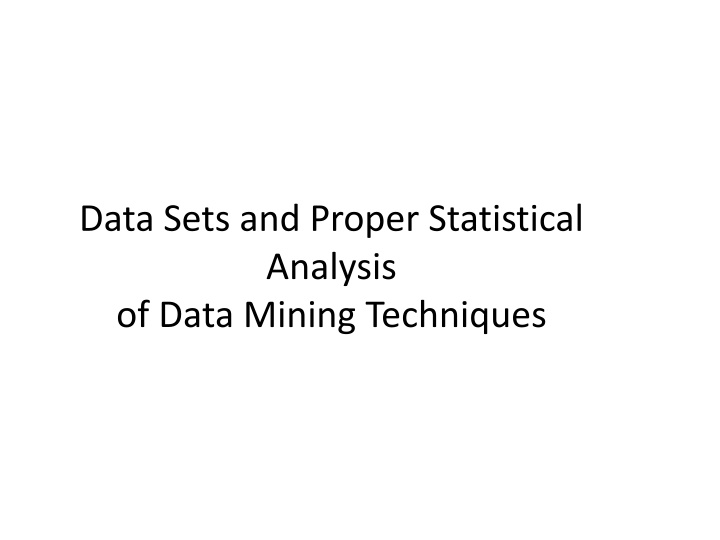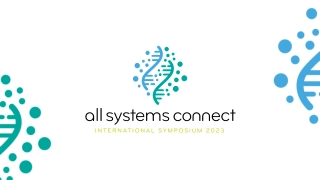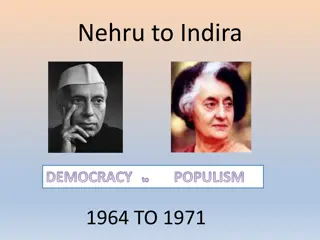Certificate Program in Water, Sanitation & Hygiene at Jawaharlal Nehru Architecture & Fine Arts University
Jawaharlal Nehru Architecture & Fine Arts University offers a unique Certificate Program in Water, Sanitation & Hygiene (CP-WASH) designed for individuals aiming to enter or advance in the WASH sectors. The program covers topics such as sanitation systems, governance, emergency management, and more, providing a comprehensive learning experience over 11 months. Upon completion, participants will be equipped to contribute innovative solutions to sustainable urban water services.
Download Presentation

Please find below an Image/Link to download the presentation.
The content on the website is provided AS IS for your information and personal use only. It may not be sold, licensed, or shared on other websites without obtaining consent from the author.If you encounter any issues during the download, it is possible that the publisher has removed the file from their server.
You are allowed to download the files provided on this website for personal or commercial use, subject to the condition that they are used lawfully. All files are the property of their respective owners.
The content on the website is provided AS IS for your information and personal use only. It may not be sold, licensed, or shared on other websites without obtaining consent from the author.
E N D
Presentation Transcript
Data Sets and Proper Statistical Analysis of Data Mining Techniques
Data Sets and Proper Statistical Analysis of Data Mining Techniques 1. Data Sets and Partitions 2. Using Statistical Tests to Compare Methods 1. Conditions for the Safe Use of Parametric Tests 2. Normality Test over the Group of Data Sets and Algorithms 3. Non-parametric Tests for Comparing Two Algorithms in Multiple Data Set Analysis 4. Non-parametric Tests for Multiple Comparisons Among More than Two Algorithms
Data Sets and Proper Statistical Analysis of Data Mining Techniques 1. Data Sets and Partitions 2. Using Statistical Tests to Compare Methods 1. Conditions for the Safe Use of Parametric Tests 2. Normality Test over the Group of Data Sets and Algorithms 3. Non-parametric Tests for Comparing Two Algorithms in Multiple Data Set Analysis 4. Non-parametric Tests for Multiple Comparisons Among More than Two Algorithms
Data Sets and Partitions The ultimate goal of any DM process is to be applied to real life problems Testing a technique in every problem is unfeasible The common procedure is to evaluate such a technique in a set of standard DM problems (or data sets) publicly available
Data Set Partitioning The benchmark data sets are used with one goal: To evaluate the performance of a given model over a set of well-known standard problems However the data must be correctly used in order to avoid bias in the results
Data Set Partitioning If the whole data set is used for both build and validate the model generated by a ML algorithm we have no clue about how the model will behave with new, unseen cases Two main problems may arise by using the same data to train and evaluate the model: Underfitting happens when the model is poorly adjusted to the data, suffering from high error both in training and test (unseen) data Overfitting happens when the model is too tightly adjusted to data offering high precision to known cases but behaving poorly with unseen data.
Data Set Partitioning By using the whole data we may be aware of underfitting problems due to a low performance of the model. The lack of data will also cause underfitting Adjusting such a model to better fit the data may lead to overfitting the lack of unseen case makes impossible to notice this situation Overfitting may also appear due other reasons like noise
Data Set Partitioning In order to: control the model s performance avoid overfitting to have a generalizable estimation of the quality of the model obtained several partitioning schemes are introduced in the literature How to partition the data is a key issue as it will largely influence in the performance of the methods Performing a bad partitioning will surely lead to incomplete and/or biased behavior about the model being evaluated.
Data Set Partitioning: k-FCV The most common one is k-Fold Cross Validation (k-FCV): 1. In k-FCV, the original data set is randomly partitioned into k equal size folds or partitions 2. From the k partitions, one is retained as the validation data for testing the model, and the remaining k 1 subsamples are used to build the model. 3. As we have k partitions, the process is repeated k times with each of the k subsamples used exactly once as the validation data.
Data Set Partitioning: k-FCV The value of k may vary, 5 and 10 being the most common ones k needs to be adjusted to avoid to generate a small test partition poorly populated with examples that may bias the performance measures used. If big data sets are being used, 10-FCV is usually utilized For smaller data sets 5-FCV is more frequent
Data Set Partitioning: k-FCV Simple k-FCV may also lead to disarranging the proportion of examples from each class in the test partition The most commonly employed method in the literature to avoid this problem is stratified k- FCV It places an equal number of samples of each class on each partition to maintain class distributions equal in all partitions
Data Set Partitioning: 52 CV The whole data set is randomly partitioned in two subsets A and B. The model is first built using A and validated with B Then the process is reversed with the model built with B and tested with A This partitioning process is repeated as desired the performance measure in each step is aggregated every time the process is repeated
Data Set Partitioning: Leave one out Is an extreme case of k-FCV k equals the number of examples in the data set In each step only one instance is used to test the model whereas the rest of instances are used to learn it.
Performance Measures Predictive processes like classification and regression rely in a measure of how well the model fits the data In classification literature we can observe that most of the performance measures are designed for binary-class problems Well-known accuracy measures for binary-class problems are classification rate, precision, sensitivity, specificity, G-mean, F-score, AUC, Youden s index and Cohen s Kappa
Performance Measures Some of the two-class accuracy measures have been adapted for multi-class problems. An example is approximating multi-class ROC analysis is theoretically possible but its computation is still restrictive Only two measures are widely used because of their simplicity and successful application when the number of classes is large enough Classification rate (also known as accuracy): is the number of successful hits relative to the total number of classifications Cohen s kappa
Performance Measures Cohen s kappa is an alternative to classification rate, a method, known for decades, that compensates for random hits. Using the resulting confusion matrix, Cohen s kappa measure can be obtained using the following expression: Cohen s kappa ranges from 1 (total is agreement) through 0 (random classification) to 1 (perfect agreement)
Data Sets and Proper Statistical Analysis of Data Mining Techniques 1. Data Sets and Partitions 2. Using Statistical Tests to Compare Methods 1. Conditions for the Safe Use of Parametric Tests 2. Normality Test over the Group of Data Sets and Algorithms 3. Non-parametric Tests for Comparing Two Algorithms in Multiple Data Set Analysis 4. Non-parametric Tests for Multiple Comparisons Among More than Two Algorithms
Using Statistical Tests to Compare Methods Using the raw performance measures to compare different ML methods and to establish a ranking is discouraged Other tools of statistical nature must be utilized in order to obtain meaningful and durable conclusions In recent years, there has been a growing interest for the experimental analysis in the field of DM
Data Sets and Proper Statistical Analysis of Data Mining Techniques 1. Data Sets and Partitions 2. Using Statistical Tests to Compare Methods 1. Conditions for the Safe Use of Parametric Tests 2. Normality Test over the Group of Data Sets and Algorithms 3. Non-parametric Tests for Comparing Two Algorithms in Multiple Data Set Analysis 4. Non-parametric Tests for Multiple Comparisons Among More than Two Algorithms
Conditions for the Safe Use of Parametric Tests The distinction between parametric and non- parametric tests is based on the level of measure represented by the data to be analyzed A parametric test usually uses data composed by real values However the latter does not imply that when we always dispose of this type of data, we should use a parametric test Other initial assumptions for a safe usage of parametric tests must be fulfilled The non fulfillment of these conditions might cause a statistical analysis to lose credibility
Conditions for the Safe Use of Parametric Tests The following conditions are needed in order to safely carry out parametric tests: Independence: In statistics, two events are independent when the fact that one occurs does not modify the probability of the other one occurring. Normality: An observation is normal when its behaviour follows a normal or Gauss distribution with a certain value of average and variance . Heteroscedasticity: This property indicates the existence of a violation of the hypothesis of equality of variances.
Conditions for the Safe Use of Parametric Tests With respect to the independence condition, Dems ar suggests that independency is not truly verified in k-FCV and 5 2CV. Hold-out partitions can be safely take as independent, since training and tests partitions do not overlap. The independence of the events in terms of getting results is usually obvious, given that they are independent runs of the algorithm with randomly generated initial seeds
Conditions for the Safe Use of Parametric Tests Three normality tests are usually used in order to check whether normality is present or not: Kolmogorov Smirnov: compares the accumulated distribution of observed data with the accumulated distribution expected from a Gaussian distribution. Shapiro Wilk: analyzes the observed data to compute the level of symmetry and kurtosis (shape of the curve) in order to compute the difference with respect to a Gaussian distribution afterwards. D Agostino Pearson: first computes the skewness and kurtosis to quantify how far from Gaussian the distribution is in terms of asymmetry and shape. It then calculates how far each of these values differs from the value expected with a Gaussian distribution.
Conditions for the Safe Use of Parametric Tests Levene s test is used for checking whether or not k samples present this homogeneity of variances (homoscedasticity). When observed data does not fulfill the normality condition, this test s result is more reliable than Bartlett s test, which checks the same property.
Data Sets and Proper Statistical Analysis of Data Mining Techniques 1. Data Sets and Partitions 2. Using Statistical Tests to Compare Methods 1. Conditions for the Safe Use of Parametric Tests 2. Normality Test over the Group of Data Sets and Algorithms 3. Non-parametric Tests for Comparing Two Algorithms in Multiple Data Set Analysis 4. Non-parametric Tests for Multiple Comparisons Among More than Two Algorithms
Normality Test over the Group of Data Sets and Algorithms Let us consider an small case of study a small set of 6 well-known classification problems 10-FCV as a validation scheme MLP as a classifier 5 runs Please note that using a k-FCV will mean that independence is not held but it is the most common validation scheme used in classification so this study case turns out to be relevant
Normality Test over the Group of Data Sets and Algorithms We want to check if our samples follow a normal distribution: As we can observe, in many cases the normality assumption is not held (indicated by an a in the table).
Normality Test over the Group of Data Sets and Algorithms Q-Q graphics can be also used to represent a confrontation between the quartiles from data observed and those from the normal distributions. Complemented with histograms of the data, the normality can be visually checked
Normality Test over the Group of Data Sets and Algorithms A general case in which the property of abnormality is clearly presented
Normality Test over the Group of Data Sets and Algorithms A sample whose distribution follows a normal shape, and the three normality tests employed verified this
Normality Test over the Group of Data Sets and Algorithms The non fulfillment of the normality and homoscedasticity conditions is perfectible. In most functions, the normality condition is not verified in a single-problem analysis The homoscedasticity is also dependent of the number of algorithms studied A sample of 50 results that should be large enough to fulfill the parametric conditions does not always verify the necessary precepts for applying parametric tests, as we could see in the previous section. For all these reasons, the use of non-parametric test for comparing ML algorithms is recommended
Normality Test over the Group of Data Sets and Algorithms The third condition needing to be fulfilled is heteroscedasticity Applying Levene s test to the samples of the six data sets results in the following table The non fulfillment of the normality and homoscedasticity conditions is perfectible.
Data Sets and Proper Statistical Analysis of Data Mining Techniques 1. Data Sets and Partitions 2. Using Statistical Tests to Compare Methods 1. Conditions for the Safe Use of Parametric Tests 2. Normality Test over the Group of Data Sets and Algorithms 3. Non-parametric Tests for Comparing Two Algorithms in Multiple Data Set Analysis 4. Non-parametric Tests for Multiple Comparisons Among More than Two Algorithms
Normality Test over the Group of Data Sets and Algorithms ML approaches have been compared through parametric tests by means of paired t tests In some cases, the t test is accompanied with the non-parametric Wilcoxon test applied over multiple data sets Their use is correct when we are interested in finding the differences between two methods they must not be used when we are interested in comparisons that include several methods.
Normality Test over the Group of Data Sets and Algorithms In the case of repeating pairwise comparisons, there is an associated error that grows as the number of comparisons done increases It is the family-wise error rate (FWER) It is the probability of at least one error in the family of hypotheses To solve this problem, some authors use the Bonferroni correction for applying paired t test although is not recommended.
Wilcoxon Signed-Ranks Test It is the analogue of the paired t-test in non- parametric statistical procedures It is a pairwise test that aims to detect significant differences between two sample means i.e. the behavior of two algorithms
Wilcoxon Signed-Ranks Test Let dibe the difference between the performance scores of the two classifiers on ithout of Ndsdata sets The differences are ranked according to their absolute values average ranks are assigned in case of ties Let R+be the sum of ranks for the data sets onwhich the first algorithm outperformed the second, and R the sum of ranks for the opposite
Wilcoxon Signed-Ranks Test Let T be the smaller of the sums T = min(R+, R ) If T is less than or equal to the value of the distribution of Wilcoxon for Nds degrees of freedom the null hypothesis of equality of means is rejected.
Wilcoxon Signed-Ranks Test Wilcoxon signed ranks test is more sensible than the t-test It assumes commensurability of differences, but only qualitatively Greater differences still count more, which is probably desired, but the absolute magnitudes are ignored From the statistical point of view, the test is safer since it does not assume normal distributions
A Case Study: Performing Pairwise Comparisons We will perform the statistical analysis by means of pairwise comparisons by using the results of performance measures obtained by the algorithms MLP, RBFN, SONN and LVQ In order to compare the results between two algorithms and to stipulate which one is the best, we can perform a Wilcoxon signed-rank test This statement must be enclosed by a probability of error, that is the complement of the probability of reporting that two systems are the same, called the p value
A Case Study: Performing Pairwise Comparisons Ranks obtained Results from Wilcoxon s test
A Case Study: Performing Pairwise Comparisons The comparisons performed in this study are independent, so they never have to be considered in a whole If we try to extract a conclusion which involves more than one comparison from the previous tables,wewill lose control of the FWER The statement: SONN obtains a classification rate better than RBFN, LVQ and MLP algorithms with a p value lower than 0.05 is incorrect
A Case Study: Performing Pairwise Comparisons The true statistical signification for combining pairwise comparisons is given by
Data Sets and Proper Statistical Analysis of Data Mining Techniques 1. Data Sets and Partitions 2. Using Statistical Tests to Compare Methods 1. Conditions for the Safe Use of Parametric Tests 2. Normality Test over the Group of Data Sets and Algorithms 3. Non-parametric Tests for Comparing Two Algorithms in Multiple Data Set Analysis 4. Non-parametric Tests for Multiple Comparisons Among More than Two Algorithms
Non-parametric Tests for Multiple Comparisons Among More than Two Algorithms Multiple comparison procedures are designed for allowing the FWER to be fixed They take into account all the influences that can exist within the set of results for each algorithm.
Non-parametric Tests for Multiple Comparisons Among More than Two Algorithms One of the most frequent situations where the use of statistical procedures is requested is in the joint analysis of the results achieved by various algorithms The groups of differences between these methods (also called blocks) are usually associated with the problems met in the experimental study.
Non-parametric Tests for Multiple Comparisons Among More than Two Algorithms In a multiple problem comparison, each block corresponds to the results offered for a specific problem. When referring to multiple comparisons tests, a block is composed of three or more subjects or results Each one corresponding to the performance evaluation of the algorithm for the problem























